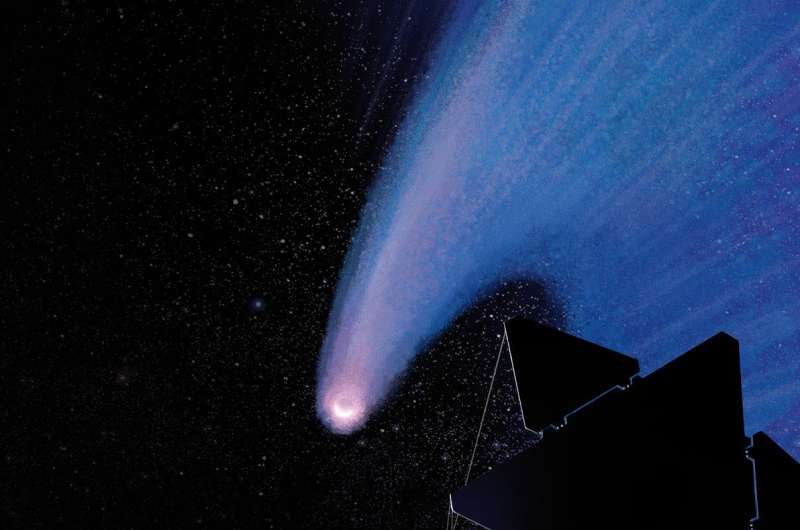Orbital mayhem around a red dwarf

In the collective imagination, planets of a solar system all circle in the equatorial plane of their star. The star also spins, and its spin axis is aligned with the spin axes of the planetary orbits, giving the impression of a well-ordered system. But nature is capricious, as an international team led by researchers from the University of Geneva (UNIGE), Switzerland, has detected a planetary system turned upside down. This discovery is published this week in the prestigious journal Nature.
GJ436 is a star that hosts a planet nicknamed "the hairy planet," which evaporates like a comet. In this study, researchers at UNIGE showed that in addition to its huge cloud of gas, the planet GJ436b also has a very special orbit. It is polar: Instead of orbiting in the equatorial plane of the star, the planet passes almost above the stellar poles.
The orbital inclination of this plane is the last piece of a puzzle that has baffled astronomers for 10 years. Unlike the planets of our solar system, whose orbits almost form perfect circles, tGJ436 forms a very flat or strongly eccentric ellipse—that is, its distance to the star varies along its orbit. "This planet is under enormous tidal forces because it is incredibly close to its star, barely 3 percent of the Earth-sun distance," explains Vincent Bourrier, researcher at the Department of Astronomy of the UNIGE Faculty of Science. "The star is a red dwarf whose lifespan is very long, and the tidal forces it induces should have since circularized the orbit of the planet, but this is not the case," he says.
Orbital architectures of planetary systems are fossil records that tell us how they have formed and evolved. A planet disturbed by the passage of a nearby star or by the presence of other massive planets in the system will keep track of it in its orbit. "Even if we have already seen misaligned planetary orbits, we do not necessarily understand their origin. This is the first time we've measured the architecture of a planetary system around a red dwarf," says Christophe Lovis, a UNIGE researcher and co-author of the study.
The existence of an unknown, more massive and more distant disturbing planet would explain why GJ436b is not on a circular orbit: "If that is true, then our calculations indicate that not only would the planet not move along a circle around the star, as we've known for 10 years, but it should also be on a highly inclined orbit. That's exactly what we just measured," says Hervé Beust, who did the orbital calculations.
These same calculations also predict that the planet has not always been so close to its star, but might have come near it recently (on a cosmic scale). Thus, the "evaporating planet" would have been pushed towards the star by the gravity of a yet-undetected companion. For Vincent Bourrier, the hunt continues: "Our next goal is to identify the mysterious planet that has upset this planetary system."
More information: Vincent Bourrier et al, Orbital misalignment of the Neptune-mass exoplanet GJ 436b with the spin of its cool star, Nature (2017). DOI: 10.1038/nature24677
Journal information: Nature
Provided by University of Geneva




















